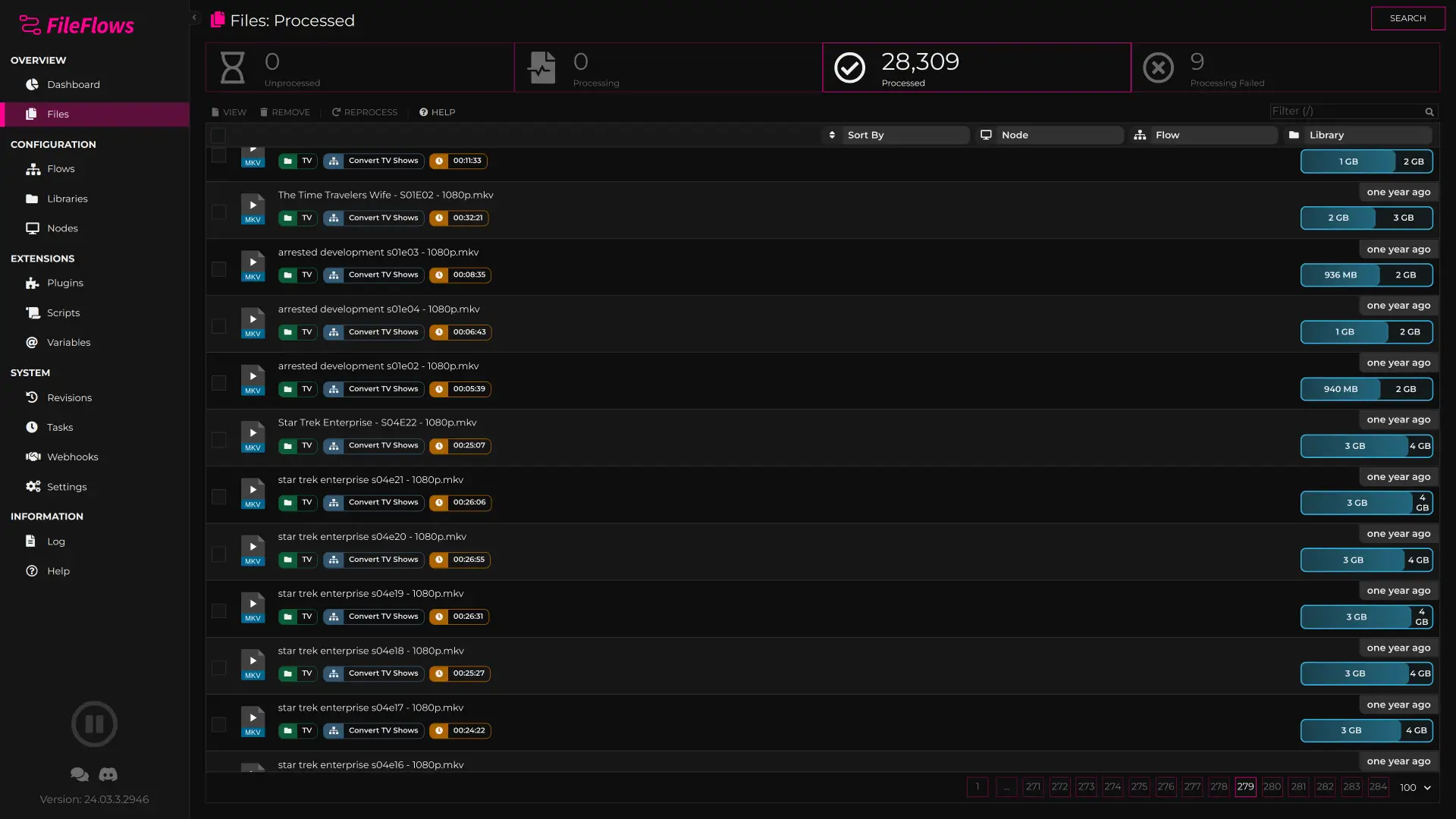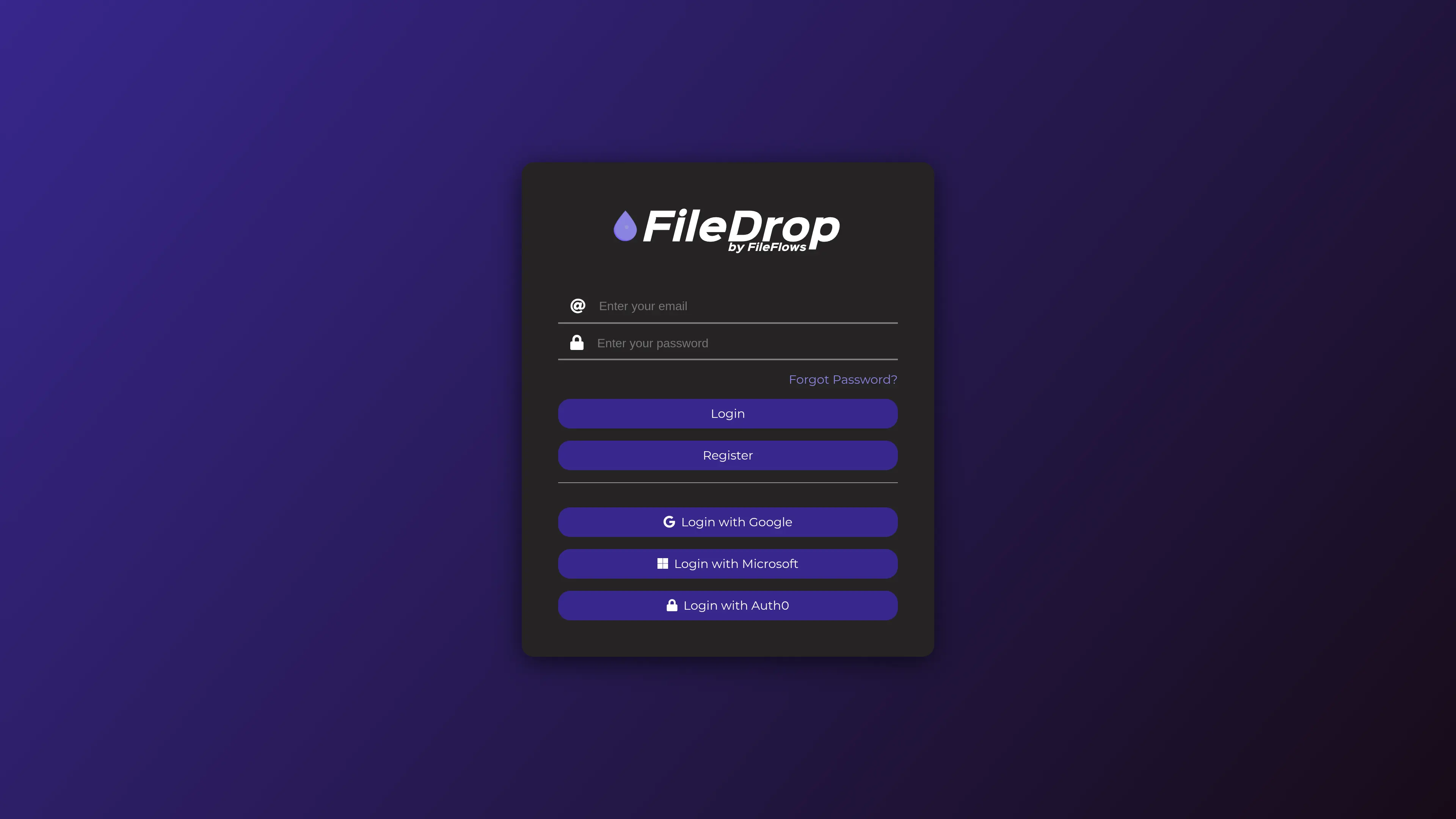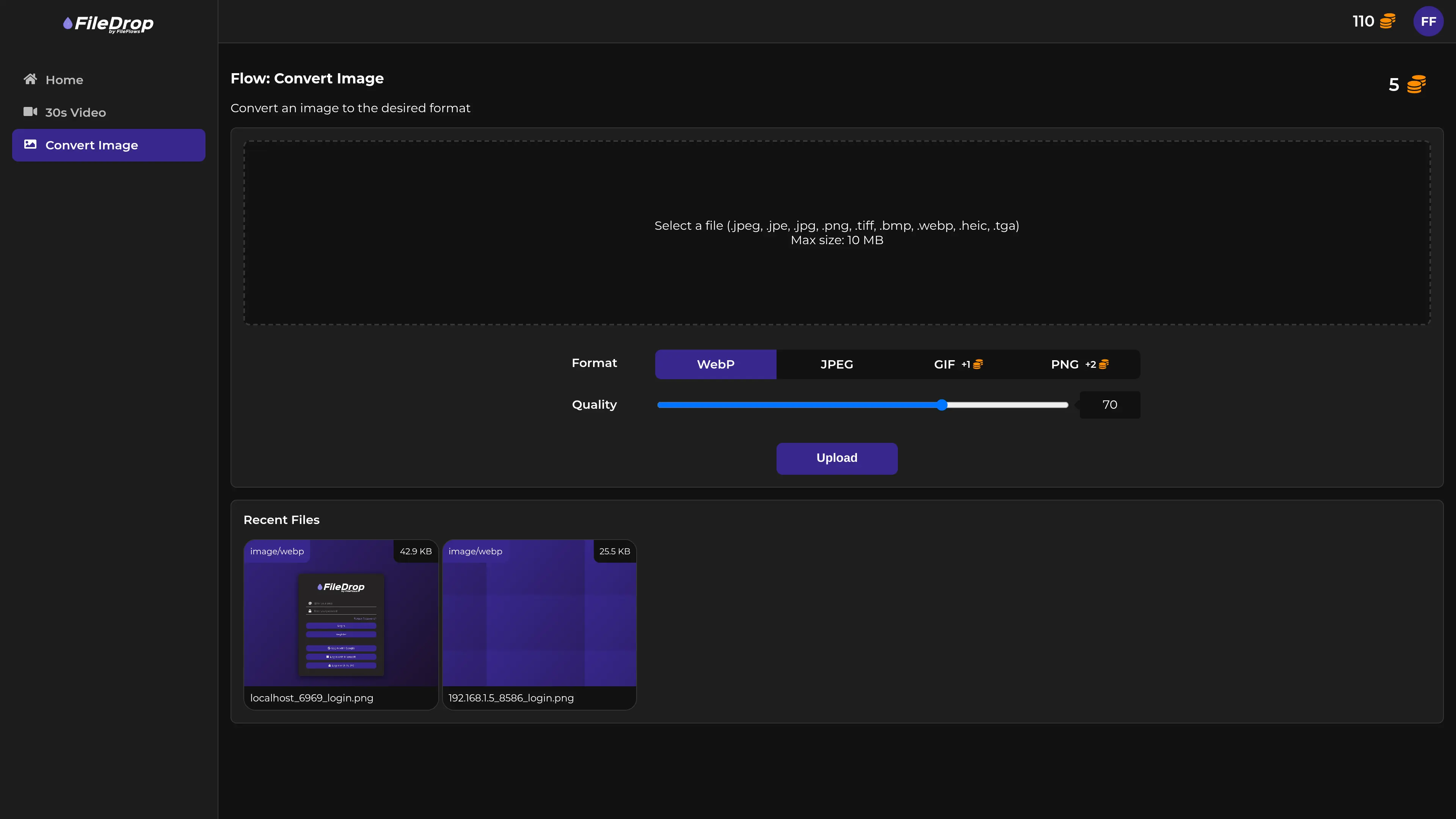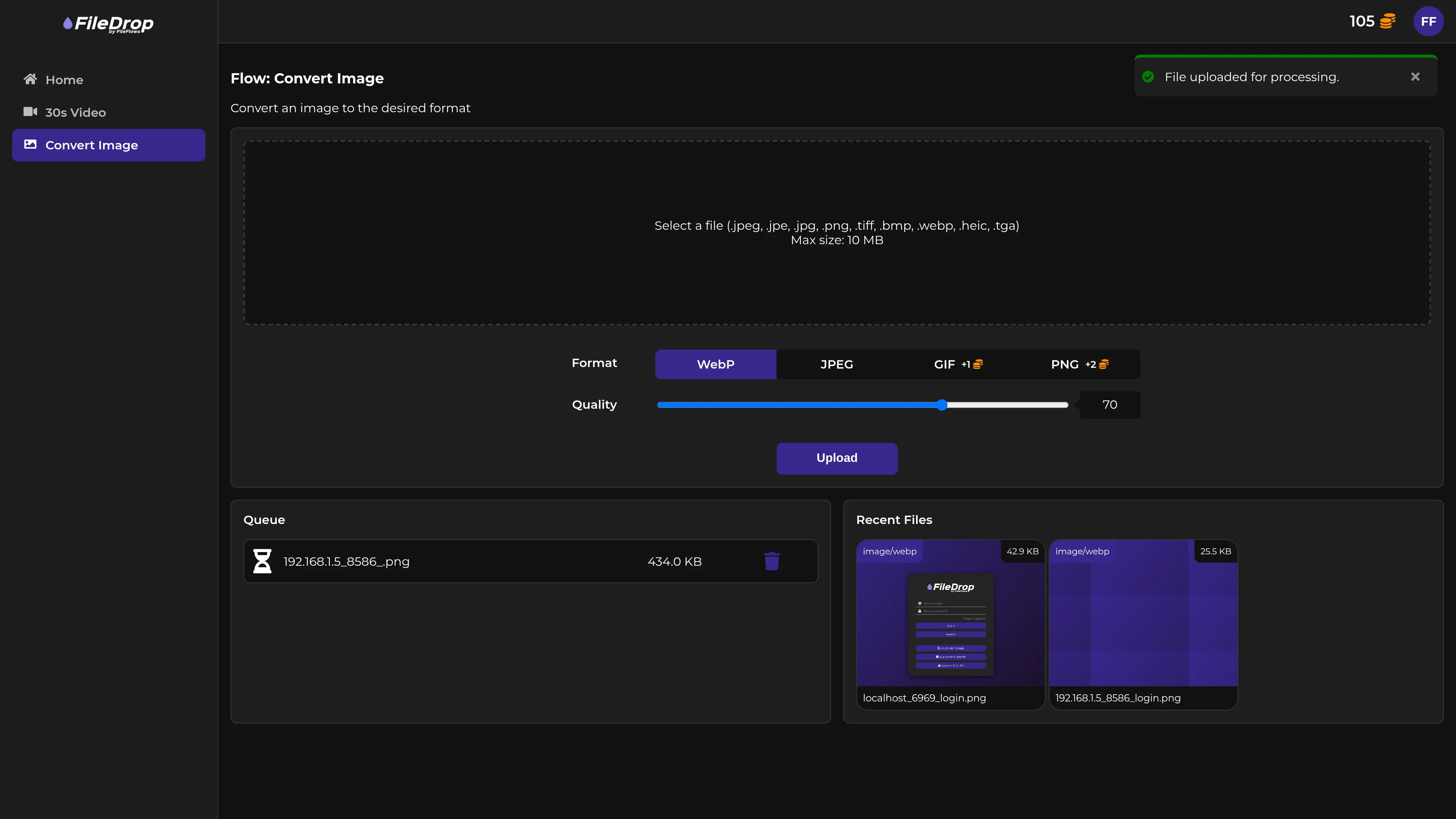FileDrop
FileDrop is a lightweight web application that allows users to upload files for processing using FileFlows. It can be used to host a FileFlows service in the cloud or as a self-hosted solution, enabling users to process their files without needing direct access to a FileFlows instance.
Binding
FileDrop listens on HTTPS and the default port is 19201, so by default is accessible via https://[host_name]:19201
How It Works
-
File Upload & Processing
- Users upload files through the FileDrop interface.
- The files are processed using pre-configured FileFlows flows, automating tasks like transcoding, compression, and metadata extraction.
- Certain processing options can be exposed as selectable fields, allowing users to customize the process.
-
Token-Based System (Optional)
- File processing can be free or require tokens, depending on admin configuration.
- Tokens act as credits that users spend on file processing.
- Admins can configure different processing options to cost different amounts of tokens.
- If a file fails processing, tokens spent on it are automatically refunded.
-
User Authentication & Access Control
- Users can sign up using email and password, or through Single Sign-On (SSO) providers like Google, Microsoft, or a custom OpenID Connect provider.
- Admins can manage user accounts and token balances.
-
Hosting Options
- Cloud-Hosted: Deploy FileDrop on a server and allow users to access it remotely for file processing.
- Self-Hosted: Run FileDrop on your own infrastructure for private, local file processing.
Use Cases
- Provide users with a simple interface to submit files for processing.
- Monetize file processing by charging tokens for specific operations.
- Host a public or private FileFlows instance for file automation.
- Allow users to customize file processing through exposed flow options.
FileDrop makes it easy to integrate FileFlows into a cloud-hosted or self-hosted environment, giving users an intuitive way to process files efficiently.



